Once upon a time, there was a Paper of Record. They proudly claimed that moniker because they valued journalism. They valued getting the facts before broadcasting the headline. For decades, they built the most trusted newspaper in the land. And that newspaper was called the New York Times.
Then came the internet. A gaggle of hoodie-wearing flip-flop dudebros moving fast and breaking things nearly put the Times and other outlets out of business. Now, anyone could have a website and report the news they wanted, like Matt Drudge, whose news shaped opinion rather than informed the public.
The Times rallied and evolved, becoming the most-read newspaper online, where they have remained since the turn of the millennium. But clickbait changed the way news was delivered. Now, the headlines had to bring eyeballs to websites. The more outrageous the headline, the more likely the clicks, and the more ad revenue from Google and other traffic-based ad servers.
A couple of those dudebros invented social media around 2006, but Twitter especially threatened the Grey Lady. Users can log on and get breaking news faster than reporters or editors could produce or fact-check it.
The New York Times warned us of the danger of that kind of fast-moving river of information, opinion, and news - which would eventually be renamed as “misinformation” and “disinformation.” Their opportunity to smack down Twitter hard came in 2013.
I sent my first Tweet in 2006 from my Treo before the iPhone was released. By 2013, I was a heavy Twitter user, thinking of myself as an early adopter and savvy self-made citizen journalist. After the Boston Marathon bombing, the FBI asked the public for help finding the bombers on the run.
With this powerful tool at our disposal, most of us took the internet to find the bombers based on fuzzy images sent out far and wide. A friend who had been a real journalist in the 1970s sent me a story on Reddit that supposedly tracked down one of the bombers - a missing student from Brown University.
But that story would turn out to be false. That student, Sunil Tripathi, had committed suicide a month earlier. It was both a scandal that we’d all rushed to judgment to smear an innocent man, not to mention putting his already grieving family through yet more suffering, and an opportunity for “old media” to warn the public of “new media” when it came to spreading a lie far and wide.
As a participant in the scandal, I was interviewed in this Times story:
Caspian closes his piece this way:
To blame Reddit is to pretend that the platform is the problem. A hive mind may have existed on Reddit during the early days when the community was small and self-selecting, but now that traffic has reached 70 million visitors a month, asking “Reddit,” whatever that might mean, to police its own news content seems to misunderstand the problem. The Sunil Tripathi debacle isn’t really a “new media” problem, much as those who think of themselves as members of the “old media” might like to see it that way. This is what media is now, a constantly evolving interaction between reporters working for mainstream companies; journalists and writers compiling and interpreting news for online outlets; and thousands of individuals participating on their own in the gathering and assembling and disseminating of information. It’s a tremendously messy process, at times thrilling and deeply useful, and at times damaging in ways that can’t be anticipated. How it all gets straightened out, how some rules might become codified, is going to take a while.
I learned a hard lesson from that episode, so now, I think before sending out tweets or writing headlines. The New York Times seemed to see itself beyond reproach back then, but they were also about to learn their lessons the hard way.
The #resistance
By the time Trump was elected, Twitter had morphed into a Greek Chorus and an arena for public shaming. The NY Times reporters were under constant surveillance to ensure they did not “normalize” a “fascist.” Reporters like Maggie Haberman were routinely and savagely bullied for “normalizing” Trump.
Their response was to capitulate, all too often, to Twitter hysteria. Twitter users would set the narrative, and the Times was not just expected but mandated to follow it. I found this out, along with so many others, in the Summer of 2020 when we watched the New York Times and other outlets lose their credibility to make nice with Twitter.
The proof that the Times no longer prioritized information and truth above the needs of fragile, entitled, spoiled people on their own staff and on Twitter was the controversy over the infamous Tom Cotton essay, “Send in the Troops.”
To date, their withering, humiliating, legacy-ruining “statement” precedes the essay as though they can’t trust their readers, they can’t trust their reporters, and they can’t trust themselves.
Here, you can plainly see how they “negotiate” the truth. They insist we all accept the lie that the police didn’t suffer and that there weren’t roving bands of mostly white agitators breaking windows and burning buildings. And even the truth must be adjusted and softened for overly sensitive readers.
None of that happened! They were (mostly) peaceful protests against the racist Nazi police and their president. Got it.
It is the height of irony that Bari Weiss, who resigned at the Times after the Cotton essay, built the Free Press that now exposes the NY Times’ behaving exactly like Twitter back in 2013 and getting the story so wrong in reporting that Israel bombed a hospital in Gaza:
Plenty of people are still hedging on this story, as though Israel would lie about something like this and make themselves look even worse before the eyes of the world than they already do.
Maybe if I hadn’t been made the subject of “bad journalism” back in 2013, I might have been more sympathetic to the New York Times, per Nate Silver’s suggestion:
But we should not go easy on them. Not for one second. They’re the “paper of record.” We want them on that wall. We need them on that wall.
Kenosha and the False Narrative
After the shooting of Jacob Blake in Kenosha, Wisconsin, Twitter spread the lie that Jacob Blake was unarmed and only there to break up a fight. The city would burn to the ground before they corrected it, not to mention how many lost their businesses and even their lives, due to a broken media that capitulated to Twitter.
Their coverage then, like now, took a side. They had to give their readers confirmation that they were all on the right side fighting against the “Nazis,” defined then as the nation’s police force and the Trump administration. Defined now as Israel.
Here are some examples of their headlines from August of 2020:
This was all by design. I didn’t know it at the time. No one did. It would not be until after Biden was installed that it became apparent they’d done it all to take down Trump. There were invisible hands everywhere, guiding the New York Times and other outlets to support any narrative that put the blame anywhere else but on Trump.
From TIME:
Protecting the election would require an effort of unprecedented scale. As 2020 progressed, it stretched to Congress, Silicon Valley and the nation’s statehouses. It drew energy from the summer’s racial-justice protests, many of whose leaders were a key part of the liberal alliance. And eventually it reached across the aisle, into the world of Trump-skeptical Republicans appalled by his attacks on democracy.
When the New York Times and other outlets aligned to oppose and resist the election of Trump, when they were expected to parrot the party-line, whether it came from the Democrats, their lawyers, their donors, or social media users, they destroyed their legacy.
There will be no happily ever after for the New York Times, and there shouldn’t be. If we keep up the pressure to hold them to their own high standard, perhaps we can help salvage some of what they once were.
When Hamas attacked Israel, I found Twitter too horrific and chaotic to follow. I turned to the New York Times instead because, at least at first, they were reporting the events as they unfolded. I was grateful then that they existed.
But, as with every news event now, sooner or later, they had to push the chosen narrative - not just because the Left is their bread and butter but because most of those hired are true believers and will push the narrative regardless.
This story of the hospital bombing was a sober reminder that it’s not possible to trust any single outlet for news now, not even the Paper of Record. Even people on their own side now, on the Left, are shattered by this blunder by the Times:
The truth can be found. You just have to look around a little and check each outlet’s version of the story to find it.
Had I never done that, I would never have known about this little-seen video I’ve posted here many times. It’s of a beloved community business owner named Sue in Kenosha, who lost her 100-year-old mattress store in the riot.
Not many cared about this story because caring about it supposedly meant you valued property over people, but I keep posting it because it is an example of good journalism. Somehow, this local news channel managed to do what journalists used to do. Get the story. Don’t take sides. Tell the truth.
//end



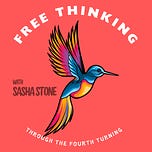




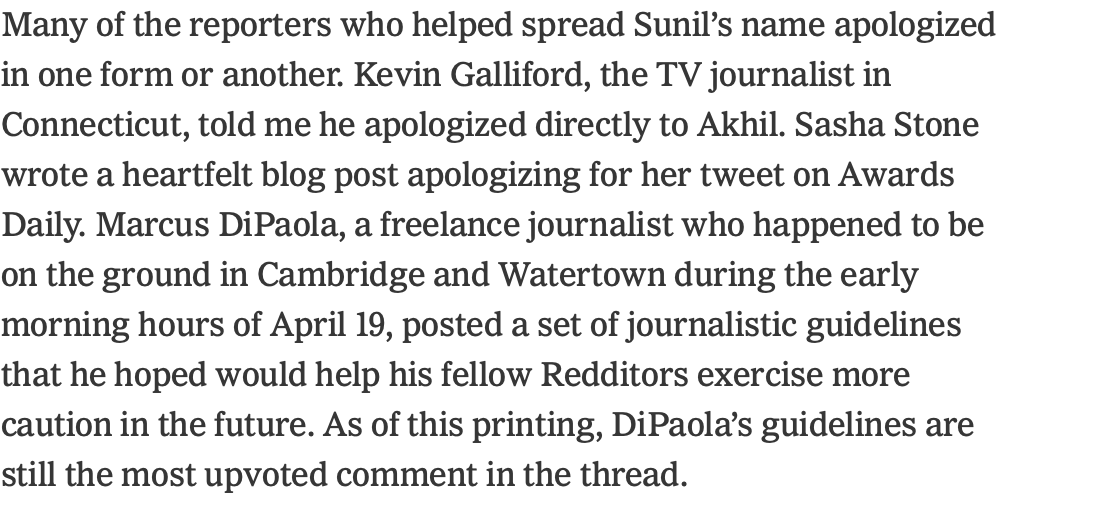

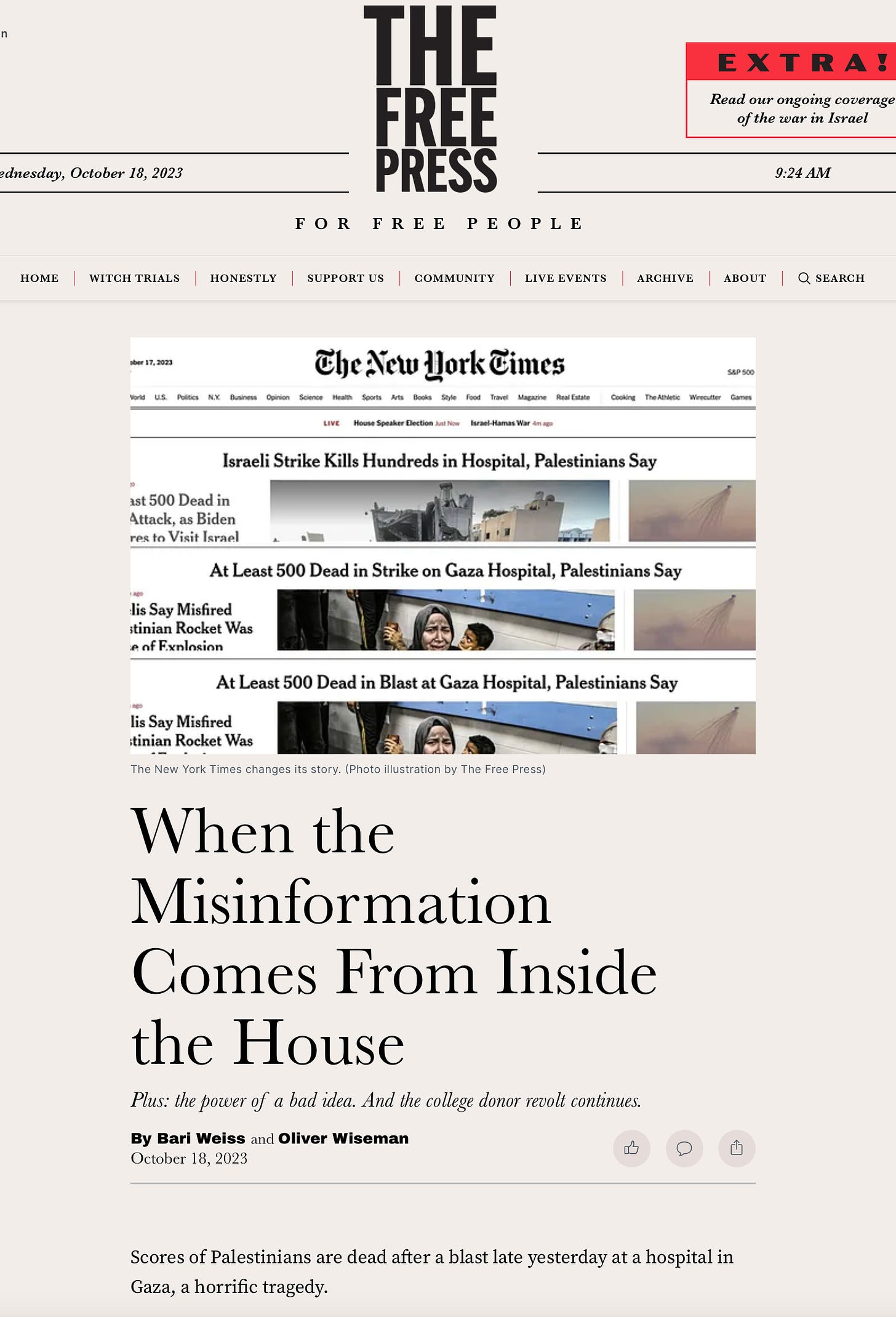
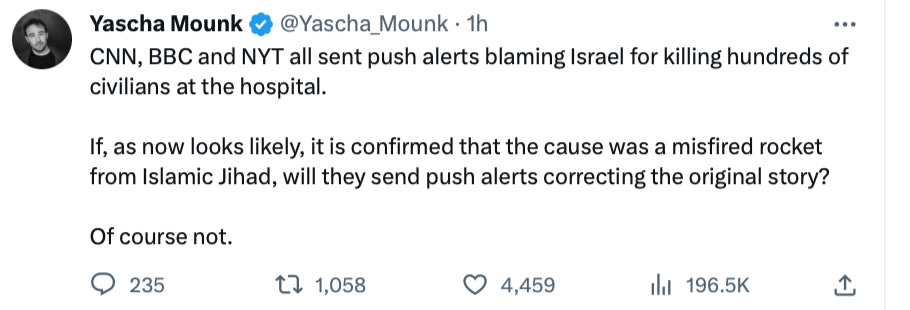

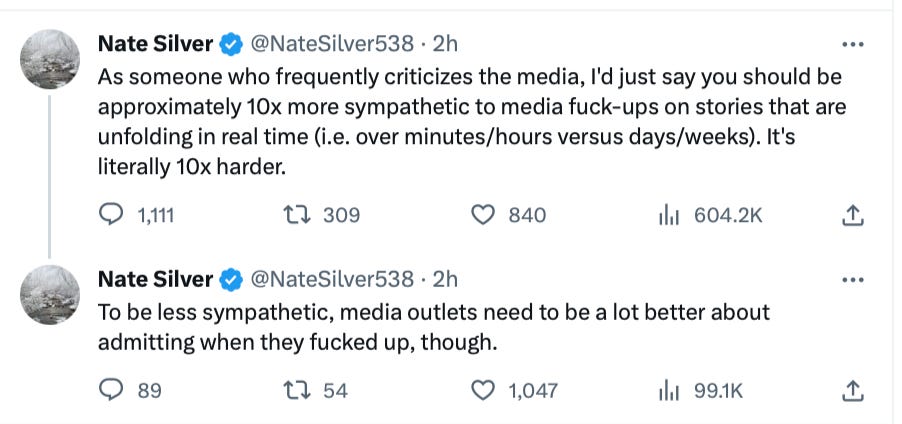

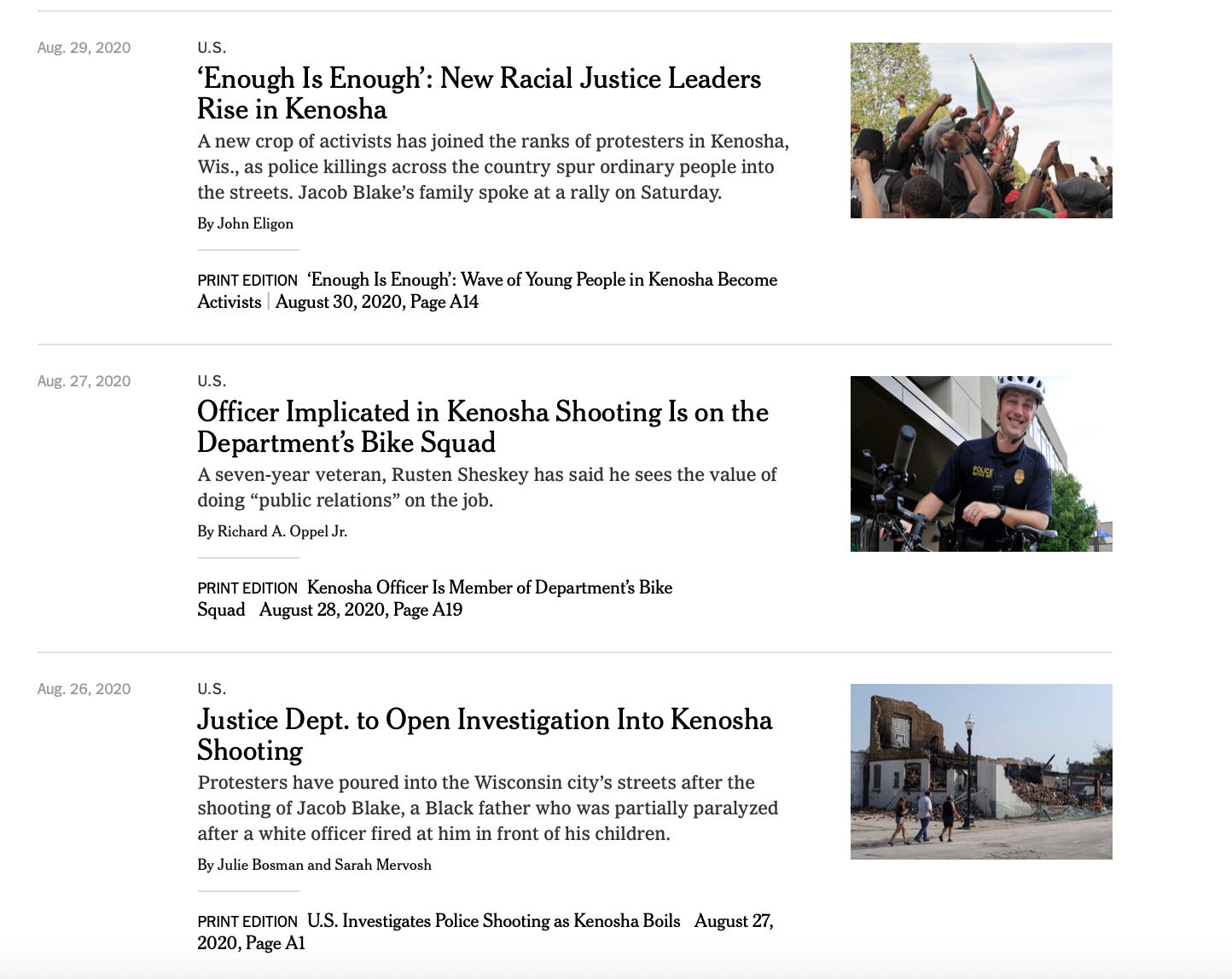

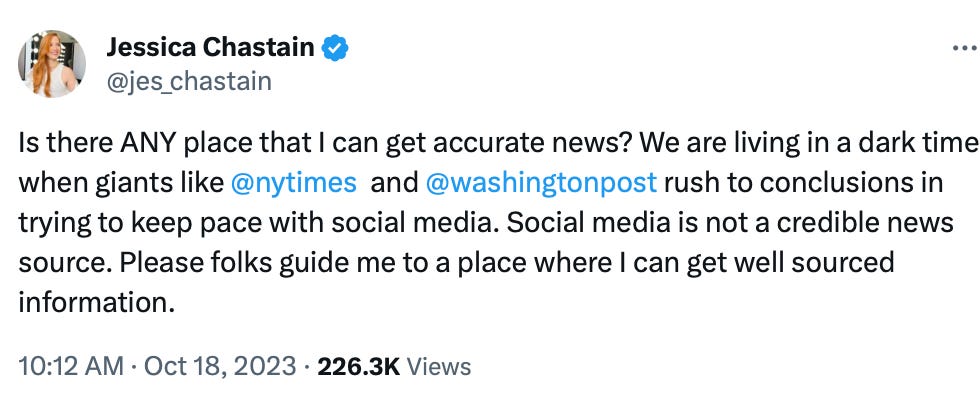









Share this post